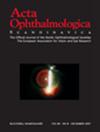Species-specific mechanisms of vertebrate eye formation
Abstract
Neurodevelopmental visual disorders (NDVD) are complex conditions that frequently arise from failure of proper embryonic eye formation, thereby directly impacting on the functional organization of the visual areas of the brain and, indirectly, on that of other brain regions. As a consequence, NDVD are heterogeneous in nature with clinical features that often include defects other than the visual ones. Understanding how the eye forms and what does interfere with the acquisition of its characteristic cup shape is thus a prerequisite to understand how NDVD arise. I will discuss our recent studies analyzing the mechanisms that different vertebrate species uses to shape the eye primordium focusing on the role of the retina pigment epithelium (RPE). The vertebrate eye-primordium consists of a pseudostratified neuroepithelium, the optic vesicle, in which cells acquire neural retina or RPE fates. As these fates arise, the optic vesicle assumes a cup-shape, influenced by mechanical forces generated within the neural retina. Whether the RPE passively adapts to retinal changes or actively contributes to optic vesicle morphogenesis remained unexplored. We generated a zebrafish Tg(E1-bhlhe40:GFP) line to track RPE morphogenesis and interrogate its participation in optic vesicle folding. We have shown that, in virtual absence of proliferation, RPE cells stretch and flatten, thereby matching the retinal curvature and promoting optic vesicle folding. Localized interference with the RPE cytoskeleton disrupts tissue stretching and optic vesicle folding. This mechanism differs from that present in amniotes, in which proliferation drives RPE expansion with a much-reduced need of cell flattening. Thus, extreme RPE flattening and accelerated differentiation are efficient solutions adopted by fast-developing species to enable timely optic cup formation. Analysis of transcriptomic dynamics (RNA-seq) and chromatin accessibility (ATAC-seq) in segregating neural retina and RPE populations highlights an early recruitment of desmosomal genes in the flattening RPE, revealing Tead factors as upstream regulators. Investigation of GRNs dynamics uncovers an unexpected sequence of TF recruitment during RPE specification, which is conserved in human-derived organoids, despite mechanistic differences in their RPE expansion. Taking this information together we are now developing hiPSC-derived eye organoids carrying mutations in genes responsible for congenital eye malformations, such as microphthalmia or anophthalmia, to identify which are the morphogenetic events that fail, thereby originating NDVD.

 求助内容:
求助内容: 应助结果提醒方式:
应助结果提醒方式:


